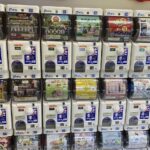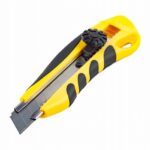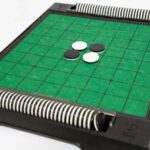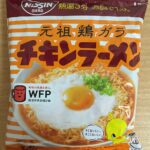- HOME >
- MR.X
MR.X
I work in trade-related jobs in the suburbs of Tokyo. I share the good points and wonders of Japan, as well as its interesting culture.

KAIZEN is a quality management method that originated in Japan's manufacturing industry. This term is now recognized in the business world globally. Let's take a closer look at the origins of KAIZEN, its fundamental principles, and its spread across the world. Origins of KAIZEN KAIZEN was born in post-war Japan. Japanese companies cultivated a culture of making small, regular improvements to increase production efficiency. This continuous improvement effort became known as KAIZEN. The term KAIZEN means "continuous improvement" and refers to a business activity in which all employees are involved. The Basics of KAIZEN The concept of KAIZEN is simple. ...

Hello! Today, I will introduce you to a toy that's hugely popular in Japan, contained within a capsule. While these toys are formally known as "capsule toys", they are more commonly referred to by the registered trademark of the comprehensive toy manufacturer, Bandai, known as "GASHAPON" (or "GACHAPON"). Additionally, Takara Tomy, another toy manufacturer, also sells capsule toys under the name "GACHA." GASHAPON GACHA What is GASHAPON? GASHAPON machines are box-shaped devices filled with small capsules containing miniature models or figures. By inserting a coin and turning the handle, a randomly selected capsule from the machine is dispensed. With a ...

Hello everyone. I want to share the results of an interesting experiment. The experiment's theme was, "How often do people apologize when bumped into on the street?" It was conducted in tourist areas in London and Oxford, UK, targeting tourists of various nationalities, including Americans, Germans, Japanese, Spaniards, Australians, and Scandinavians. Results for Japanese participants: In the experiment, many people from different countries apologized when intentionally bumped into by the experimenter. However, the results for the Japanese were surprising. Even when the experimenter tried to bump into them on purpose, Japanese participants quickly sensed the movement and evaded it. This ...

The cutter knife is an incredibly useful tool that we utilize in various scenarios - in our daily lives, in the office, in art, and the construction industry, to name a few. There might be few who deeply understand the origins of this simple yet revolutionary tool, or the backstory of why it's loved worldwide. The Origin of the Japanese Cutter Knife the challenging times after the war, thought of a method to cut paper using shards of glass. Inspired by the creases in the chocolate bars eaten by the American occupation soldiers, he came up with the idea of ...

Hello! Today, I will introduce the culture of giving souvenirs in the workplace and business. About Japan's Souvenir Culture In Japan, there is a long-standing culture of giving souvenirs. When returning from trips or business trips, it's a common practice to bring something back for family, friends, and coworkers as a gesture of gratitude and to share memories of the journey. Souvenir Culture at the Workplace In Japanese workplaces, when returning from domestic or overseas business trips, it's common to bring back food, especially sweets, as souvenirs for colleagues. Particularly, female employees who like sweets often look forward to receiving ...

Othello is a board game where players alternately place black and white stones, capturing the opponent's stones by sandwiching them between their own. While it's a game loved worldwide, it's actually an invention from Japan. The Creation of Othello Othello was invented by a Japanese man named Mr. Goro Hasegawa. Mr. Goro Hasegawa came up with this game in 1945, during his junior high school years, shortly after the end of World War II. At that time, Japan had few forms of entertainment due to the aftermath of the war, and Mr. Goro Hasegawa created this game to play with ...

The QR code is a two-dimensional code composed of black and white squares. By scanning it with a smartphone camera, you can obtain information such as URLs, phone numbers, and email addresses. The Invention of the QR Code The QR code was developed in 1994 by Mr. Masahiro Hara, an engineer at the Japanese automobile parts manufacturer "DENSO WAVE". At the time, barcodes were used in manufacturing, but a code that could read more information at a faster rate was needed. Mr. Masahiro Hara developed the QR code in response to this need. The QR code was first adopted for ...

Hello! Today, I'd like to introduce you to the punctual operation of Japanese trains. Japanese trains rarely run late Japanese trains are known worldwide for their punctuality. Whether in urban or rural areas, trains run almost exactly according to the timetable. Even when there are delays, they typically last only a few minutes. In the urban train interiors, an apology announcement is broadcast even for a mere one-minute delay. Interestingly, the high-speed railway "Tokaido/Sanyo Shinkansen", which operates approximately 320 times a day and transports around 460,000 passengers, has an average delay time of just 12 seconds per train. Even for ...

Hello, everyone! Today, I'd like to introduce you to Japan's renowned instant ramen, "Nissin Chicken Ramen," and the CUPNOODLES MUSEUM, where you can delve into the history and manufacturing process of Nissin's instant ramen and cup noodles. Nissin Chicken Ramen CUPNOODLES MUSEUM Overview of Nissin Chicken Ramen Nissin Chicken Ramen, launched in 1958, holds the distinction of being Japan's first-ever instant ramen. Its hallmark is the simple chicken broth flavor, and it has been a staple and favorite in Japanese households for decades. Developer's Anecdote Mr. Momofuku Ando, the inventor of Nissin Chicken Ramen. This ramen was the brainchild of ...

In this article, we will introduce something commonly seen on rainy days in Japan. Japan has unique measures to prevent bringing water droplets inside buildings on rainy days. Especially in places like department stores and restaurants where many people visit, you can find the following three types of measures: Manual Type At the entrance, there are plastic bags provided to cover your umbrella. This is to prevent dripping water by covering the umbrella yourself. When leaving the store, you remove the plastic bag from the umbrella and dispose of it in the trash can. This is the most common measure ...